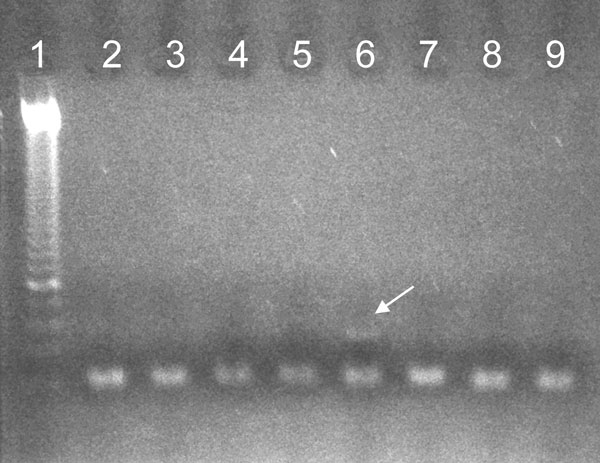Volume 18, Number 1—January 2012
Letter
Visceral Leishmaniasis during Italian Renaissance, 1522–1562
Figure

Figure. PCR amplification of a 123-bp fragment of kinetoplastid mitochondrial DNA of Leishmania spp. from Eleonora from Toledo (lane 6, arrow). Lane 1, molecular mass standard; lanes 2–5, ancient controls; lanes 7–9, blank controls.
Page created: December 20, 2011
Page updated: December 20, 2011
Page reviewed: December 20, 2011
The conclusions, findings, and opinions expressed by authors contributing to this journal do not necessarily reflect the official position of the U.S. Department of Health and Human Services, the Public Health Service, the Centers for Disease Control and Prevention, or the authors' affiliated institutions. Use of trade names is for identification only and does not imply endorsement by any of the groups named above.